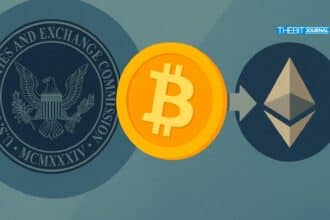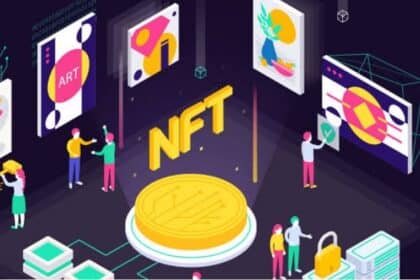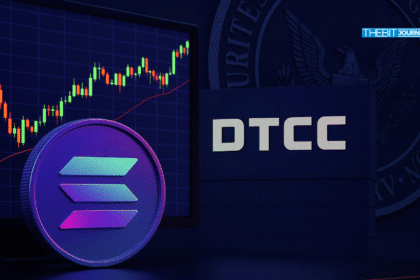Ripple is preparing to launch its new stablecoin, RLUSD, which will be pegged to the U.S. dollar. Ripple CEO Brad Garlinghouse announced during a fireside chat at the Korea Blockchain Week in Seoul that the Ripple stablecoin launch is “very close” and could happen in the coming weeks.

He explained that the stablecoin is currently in the final stages of a private beta test. “We’re in a private, closed beta,” Garlinghouse said. “It’s called Ripple USD. RLUSD has already been created and will launch soon — in weeks, not months.”
This marks an important step for Ripple, known for its cross-border payment services. The Ripple stablecoin launch aims to offer a stable, secure option in a market that is currently dominated by other major stablecoins like USDT and USDC.
With over 70% of the total stablecoin supply held by USDT and 21% by USDC, according to data from The Block’s data dashboard, Ripple’s entry could potentially shake up the existing market dynamics.
Why Launch a Stablecoin Now?
The decision to introduce a new stablecoin follows the depegging of USDC about 18 months ago, which Garlinghouse sees as a critical moment for the market. “We felt there was an opportunity for a credible player, already working with many financial institutions, to lean into that market,” he explained. The Ripple stablecoin launch is intended to complement XRP tokens, offering additional stability and utility for users.
Monica Long, Ripple’s president, had earlier hinted at the stablecoin’s design and its intended market use. In June, she stated that RLUSD is being tested on two blockchain networks, specifically to augment XRP’s existing functionalities. This aligns with Ripple’s broader strategy to expand its ecosystem by integrating new products that provide value and enhance user experience.

No Interest in US IPO Amid Regulatory Concerns
While the Ripple stablecoin launch is set to make waves, Garlinghouse made it clear that Ripple has no plans for an Initial Public Offering (IPO) in the United States. His reasoning is straightforward: the current regulatory environment is not favorable. Garlinghouse criticized the U.S. Securities and Exchange Commission (SEC), describing its stance towards crypto as “pretty hostile.”
He pointed out the inconsistency in the SEC’s approach by saying, “SEC approved Coinbase going public in the United States, and now the SEC is suing Coinbase for the same things they approved.” Garlinghouse’s comments highlight a growing frustration within the cryptocurrency community about the lack of regulatory clarity and the perceived adversarial approach of the SEC.
Despite regulatory hurdles, Garlinghouse remains optimistic about the future of cryptocurrencies. “I am more optimistic about the next five years of crypto than I have ever been,” he said. This optimism is bolstered by Ripple’s expanding suite of products, including the forthcoming Ripple stablecoin launch, which is expected to further solidify its position in the global financial ecosystem.
A Critical Moment for Ripple
The Ripple stablecoin launch comes at a time when the stablecoin market is both crowded and competitive. Dominated by heavyweights like Tether’s USDT and Circle’s USDC, Ripple’s entry could create significant disruption. However, Ripple’s established relationships with numerous financial institutions may give it an edge in building trust and adoption for RLUSD.
In addition to entering a new market segment, the Ripple stablecoin launch represents a strategic move to strengthen its offerings and counterbalance regulatory challenges. According to Garlinghouse, “We have the technology, the talent, and the resources to make a big impact with RLUSD, and we’re just getting started.”
Industry Reactions and Market Impact
The announcement of the Ripple stablecoin launch has garnered significant attention from industry experts and market analysts. Many see it as a bold step that could open new doors for Ripple, allowing the company to diversify its product portfolio and potentially increase its market share in the stablecoin sector.
Some experts believe that if the Ripple stablecoin launch succeeds, it could encourage other traditional financial institutions to explore similar ventures, further legitimizing the use of blockchain and crypto in mainstream finance. The success of RLUSD could also provide a credible alternative to existing stablecoins, particularly in markets where regulatory compliance and stability are highly valued.

Conclusion
Garlinghouse emphasized that Ripple is more optimistic about the future of crypto than ever before, but he noted that most of its growth will likely happen outside the U.S. Due to regulatory challenges in the U.S., Ripple will continue to focus on expanding in markets where the rules are clearer and more supportive of innovation.
Ripple’s entry into the stablecoin market comes at a time when demand for reliable and transparent digital currencies is growing. The Ripple stablecoin launch could offer a new option for people looking for stability in their digital transactions.
For more updates on Ripple’s developments, stay tuned to The BIT Journal, where we bring you the latest news and insights from the world of cryptocurrency.




























